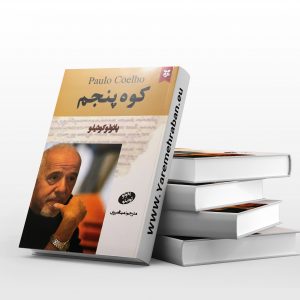Description
Introducing the book The power of point of view : make your story come to life by Alicia Russell
The Magic of Perspective is a book by Alicia Russell that discusses perspective and its defining role in literature and fiction.
About the book The power of point of view : make your story come to life
One way to diversify the narrative structure that is familiar to everyone is to use perspective; Using perspective in the narrative through which the reader experiences the story. Storytellers have long understood that as the narrator changes, so does the story.
To better understand the magical power of perspective, the reader’s dual understanding of culture must also be added to the unique feature of the author’s perspective when telling the story. Readers can completely immerse themselves in the fascinating character of the story, while, like an outside observer, watching his work by distancing himself from the character. In this way, they can not only participate in the events of the story on behalf of the character at the same time, but they can, with an active mind, use their participation in these events and analyze everything.
In this book, Alicia Russell explores how the author can, by changing perspective, present complex, subtle, and two-way (interactive) experiences to the reader, and any work of fiction, even if it has an old theme. Give a fresh and fresh look. He explains that in order to do this, writers must first create vibrant, highly motivated characters and put them in difficult or engaging situations, then find a precise angle to define their story, and fill that perspective. Give wings to bring their story to life in the mind of the reader.
Who do we recommend reading The Magic of Perspective?
The audience of this book is interested in learning storytelling techniques.
About Alicia Russell
Alicia Russell, a novelist, essayist, researcher, and professor of American fiction, received her master’s degree in English literature and language from Butler University, where she later devoted herself to writing and teaching writing.
He is currently the director of one of the most popular online writing training sites. He has also taught fiction at Indiana University in the United States for eight years. Russell has written extensively on fiction and published nine romance novels. His latest novel, The Year He Fell, was published in 2010 in the United States.
Part of the book The power of point of view : make your story come to life
You may remember the first person (I) , the second person (you or you), and the third person (him) in grammar from school. But the issue of characters in the new grammar is just the beginning of the discussion of the point of view in the story.
From this point of view, I / you / he / she is a person who has unique values, feelings, thoughts, and attitudes in perceiving the world and the way the story is told. The author can create a special story and a living prose by determining the point of view of his fictional character and what effect this point of view has on the narrative plot.
So now what is this angle of view? The point of view is the perspective with which the reader can experience the story. The perspective here is perceptions, thoughts, and feelings, and the angle of view in the story determines who you understand and feel when you read the story of perceptions (sights, sounds, and three other senses) , thoughts, and feelings. This, of course, is a simple definition, and naturally you become more complex as you delve deeper into the subject.
The angle of view is the car with which the reader travels in the story. For most of the story, one of the characters drives the car, and we see some events through the character’s eyes, hear through his ears, and feel through his emotions.
Of course, we may not really feel that in a battlefield, we have sunk into the cover (mind and body) of a character named Smith, but when a cannon is fired on this battlefield, we feel that our corners are like Smith’s corners. Our eyes are blurred just like hers, and like Smith we are thinking of dropping our weapons and fleeing into the woods.
Plus, just like him – but without having to fight on the battlefield – we feel tired and frustrated and suffer. However, at this point the author changes the angle of view of the story from one person to another wherever he wants – for example, he moves us from the cover of Smith to the cover of a veteran military reporter who is summarizing a battlefield report for radio night listeners. .
In the second case, we empathize with a person who feels ashamed and guilty because he is in a safe place, holding a microphone in his hand, reporting on people who are being shot.
In fact, it is the author who decides who we experience the story from each time we tell the story. There are several good ways and several bad ways to define the story correctly and use it from the right angle, which we want to address in this book. But a very important point that should never be forgotten is that although the reader’s point of view is pivotal, it is in the hands of the writer.
Perspective means who should tell the story and how much the narrator should know and how much to tell. If you change the narrator to define an event, the event or story will change completely. In addition, each character has a point of view depending on his abilities and perceptions, and with his point of view, his personality can also be shown. In fact, these points determine the importance of the angle of view.
The author of the book, Ms. Russley, teaches storytelling at the university and has written about 10 novels so far. Which type of narrator should be used to define each type of novel, the importance of specifying each point of view, considering the perceptual, emotional abilities of each point of view, and finally what level of perspective should be used in each scene of the story. he does.
According to the author of this book, it starts with a discussion about the basic principles of perspective and what is perspective, and then continues with the topic of choosing perspective and what angle of view reveals your story, as well as perspective and elements of the story. .
Also subject to story building, first-person perspective, second-person perspective: you, third-person impersonal perspective, third-person singular personal perspective, personalized third-person perspective, specify angle of view, viewing angle levels, create alternative sounds And unusual is also one of the topics covered in this book.
According to the translator of this work, in the final part, there is a Persian-English and Persian-English dictionary and a detailed index for immediate retrieval of the contents.
1- Introducing the book The power of point of view : make your story come to life on YouTube
2- Introducing the book The power of point of view : make your story come to life in Aparat














Reviews
There are no reviews yet.